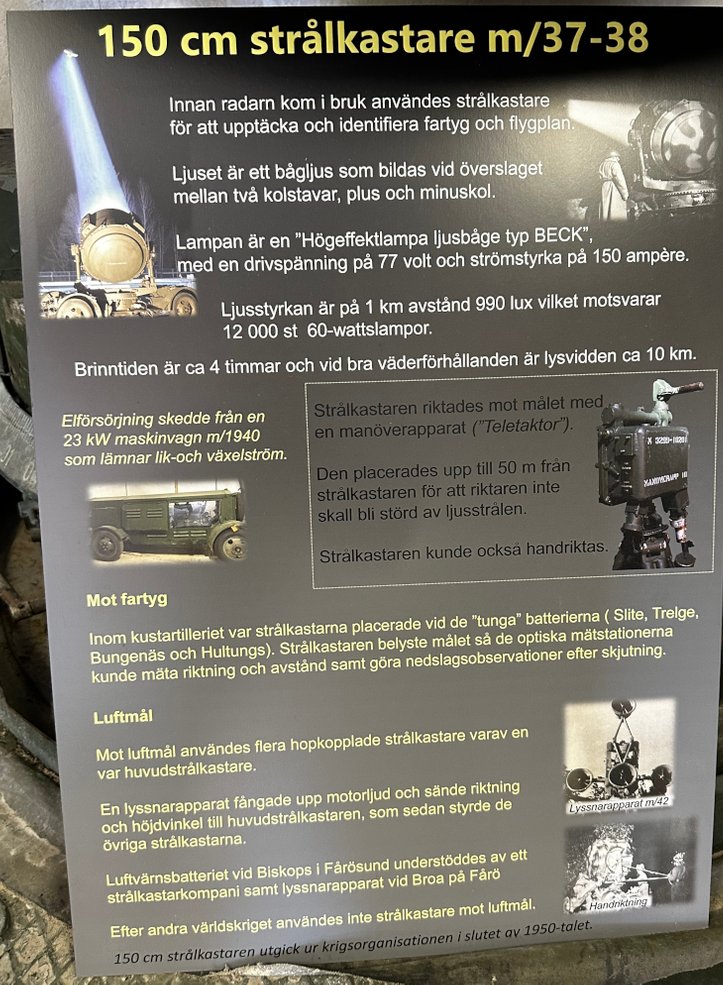150 cm headlight m/37-38
150 cm headlight m/37-38
Before radar came into use, searchlights were used to detect and identify ships and aircraft.
The light is a beige light that is formed when two koi sticks, plus and minus carbon, are crossed over.
The lamp is a "High power lamp light bag type BECK,
with a drive voltage of 77 volts and amperage of 150 amperes.
The brightness at a distance of 1 km is 990 lux, which corresponds to 12,000 60-watt lamps.
The burning time is about 4 hours and in good weather conditions the light range is about 10 km.
Electricity was supplied from one 23 kW machine wagon m/1940 which leaves direct and alternating current.
The searchlight was aimed at the target with a maneuvering device (Teletaktor)
It was placed up to 50 m from the searchlight so that the rectifier will not be affected by the light beam.
The beam thrower could also be operated manually.
Against ships
Within the coastal area, the searchlights were located at the "heavy balteriums" (Slite, Trelge, Bungenäs and Hultungs), The searchlight illuminated the target so the optical measurement stations could measure direction and distance and make impact observations after firing.
Airtarget
Against air ml, several interconnected searchlights were used, one of which was a main beam searchlight.
A listening device picked up engine noise and transmitted the rake and elevation angle to the main thruster, which then controlled the Other searchlight.
The anti-aircraft battery at Biskops in Fårdsund was supported by the searchlightcompany and a listening device at Broa on Fårö.
After the Second World War, anti-aircraft guns were not used.
150 cm searchlights came out of the war organization in the end of the 1950s.
